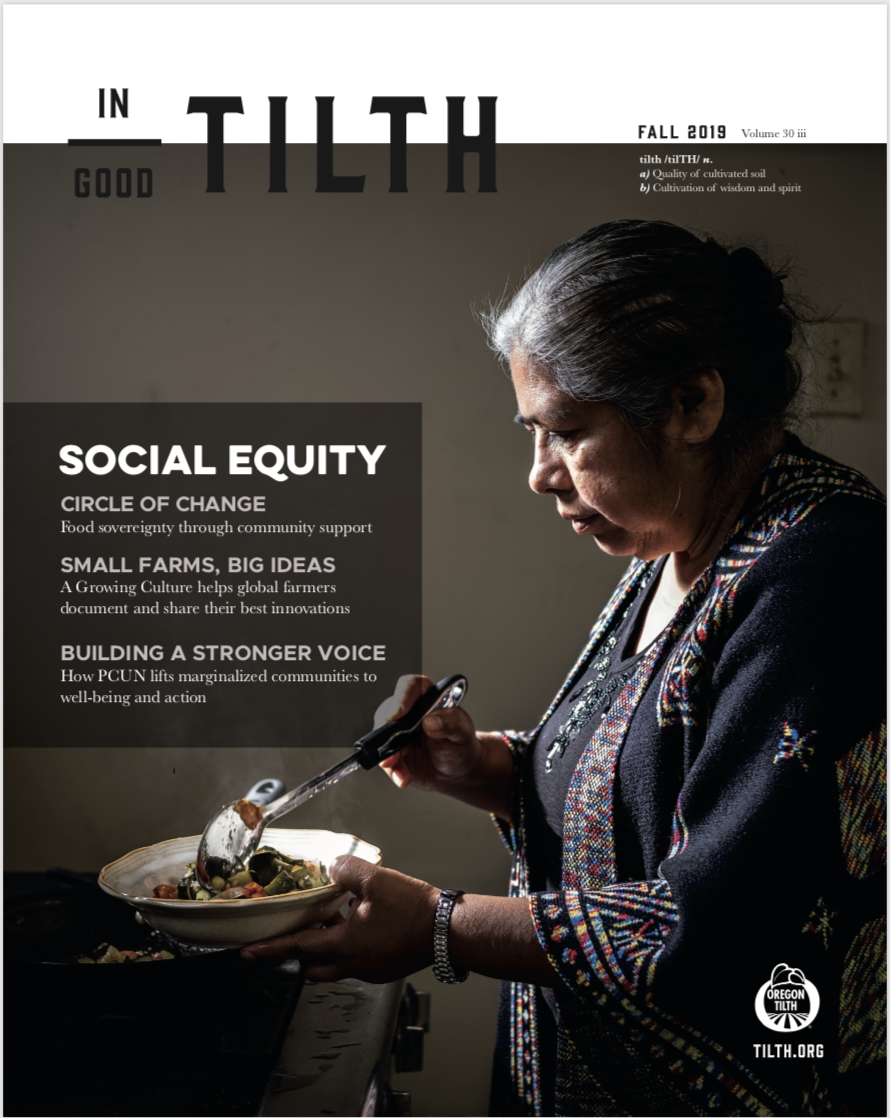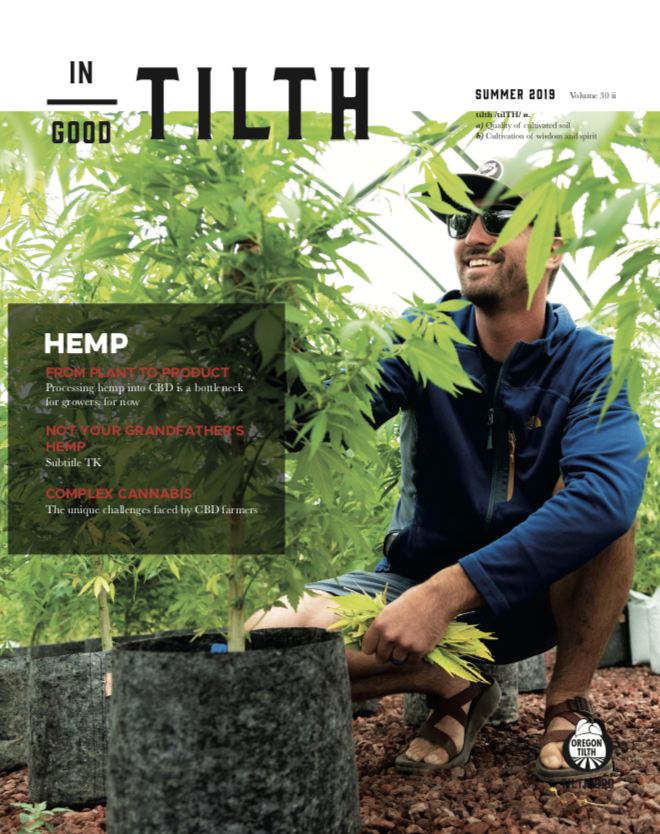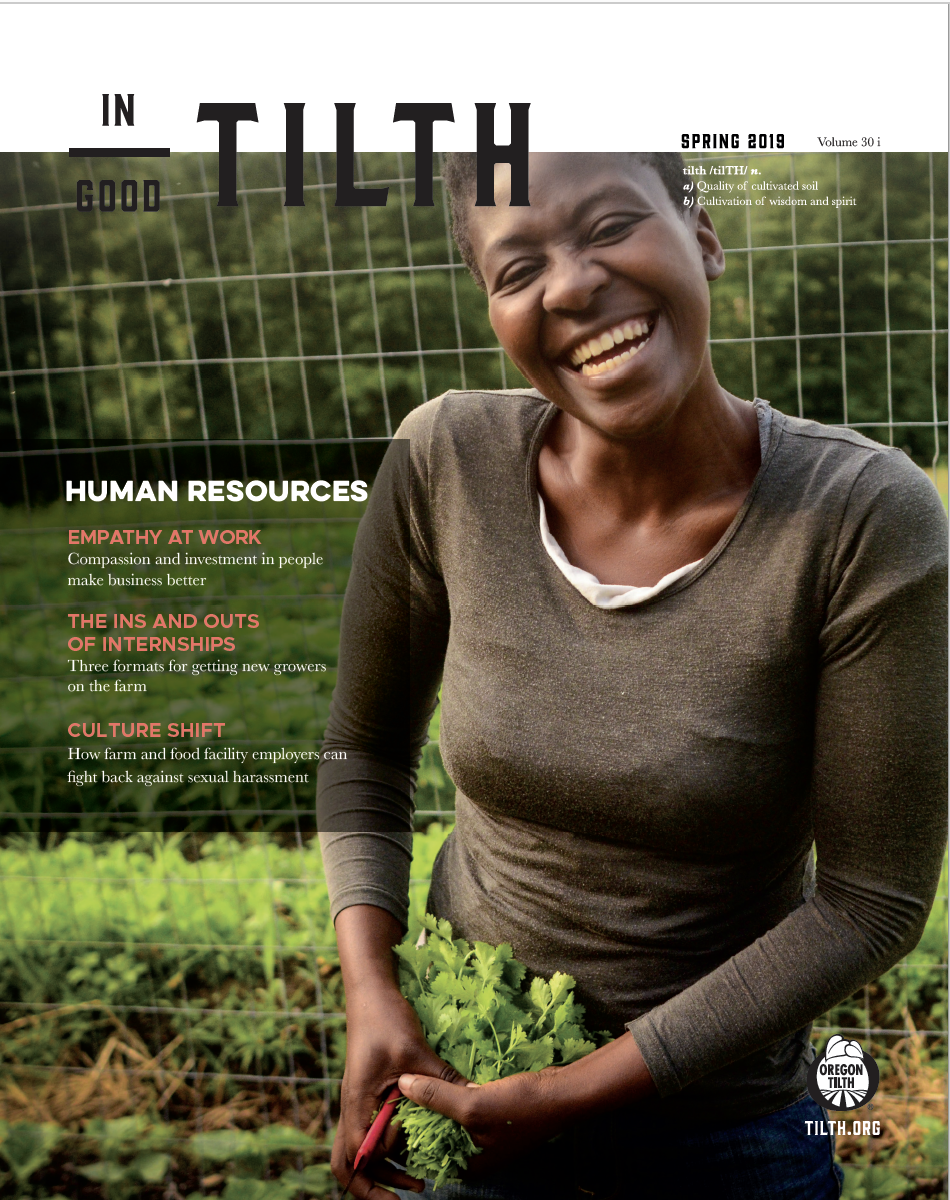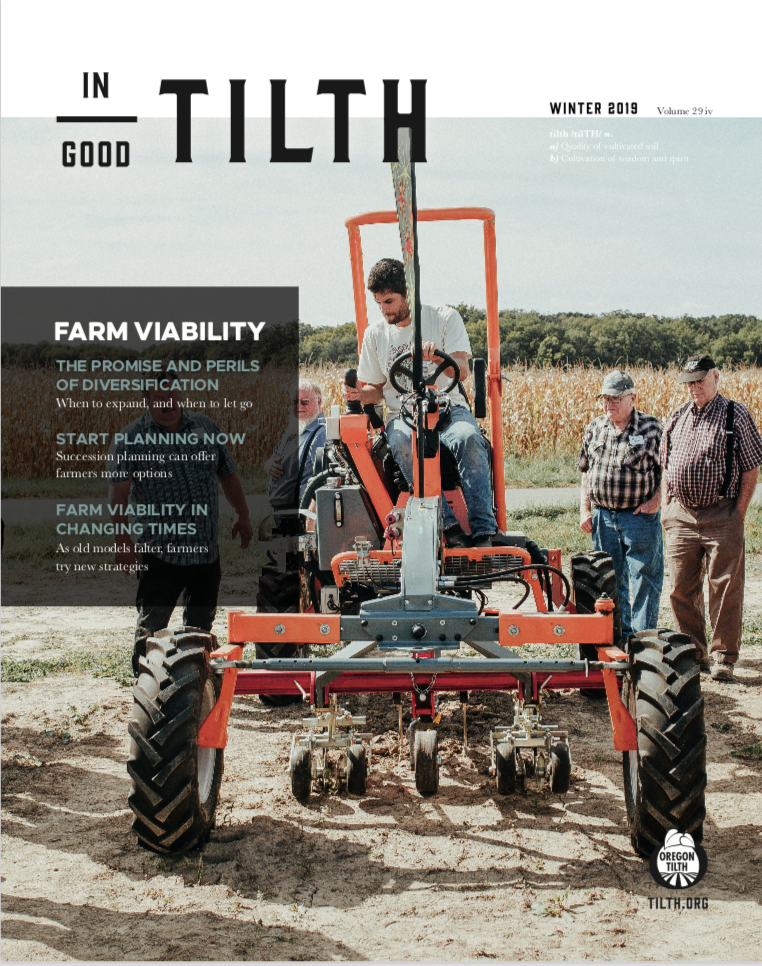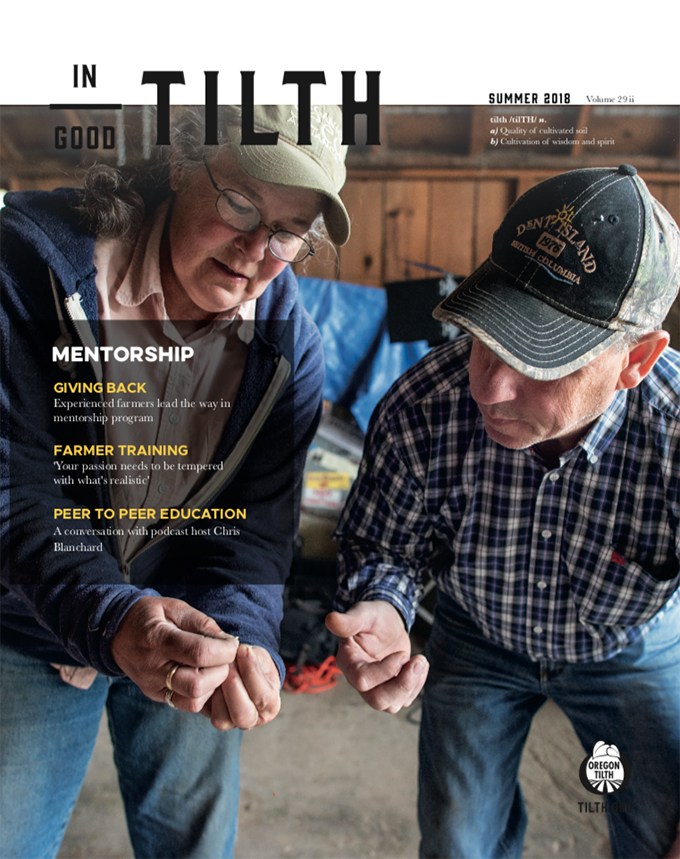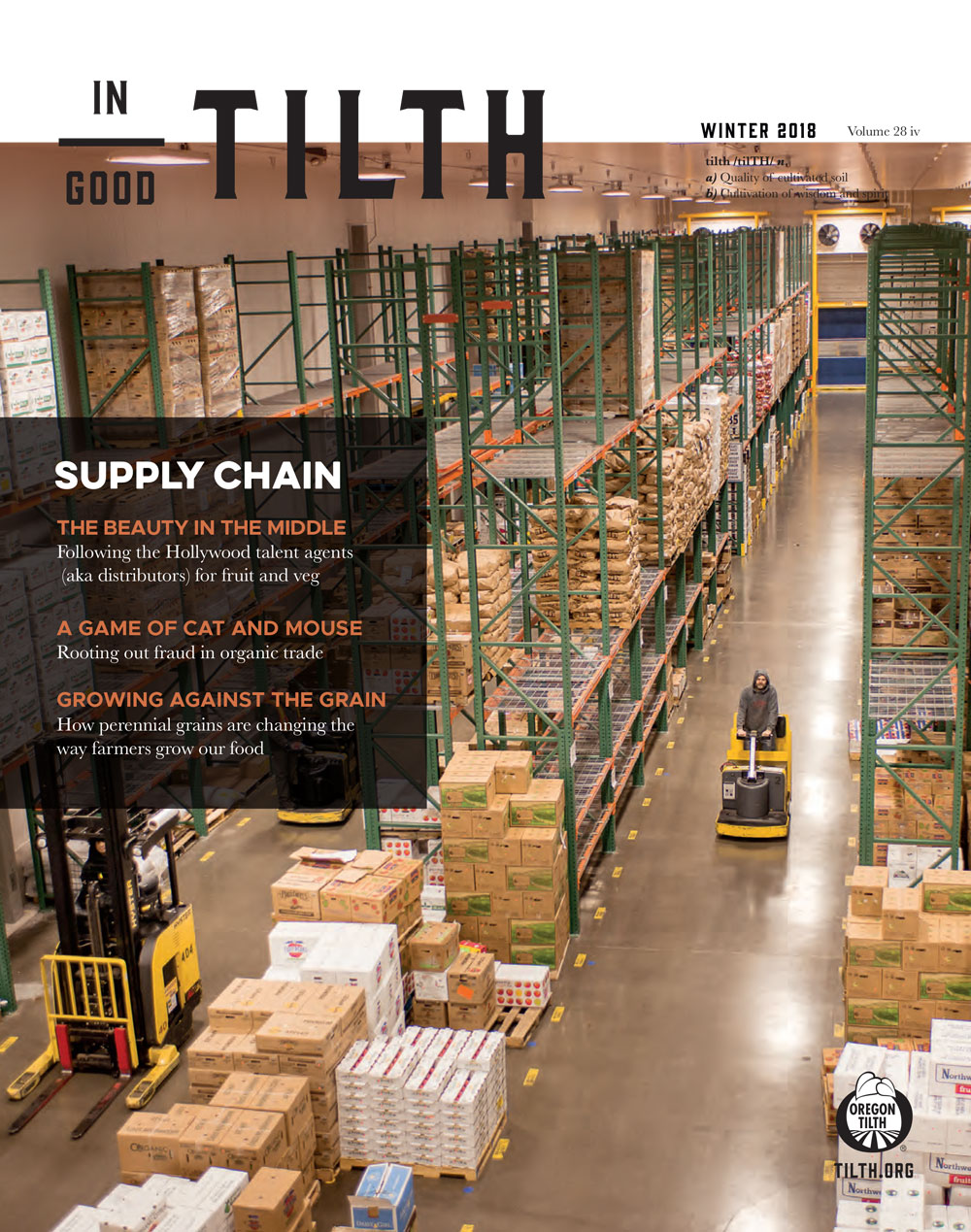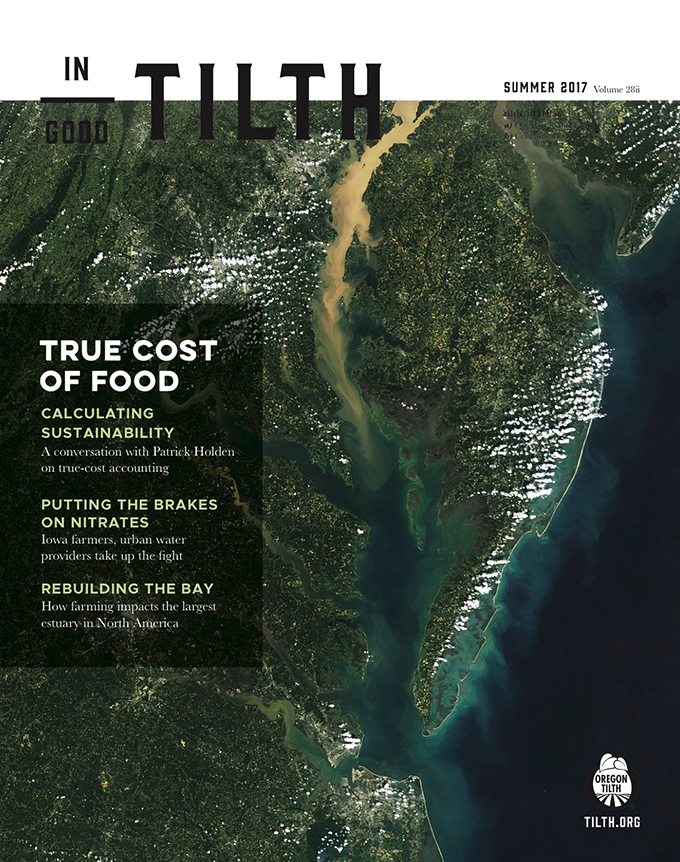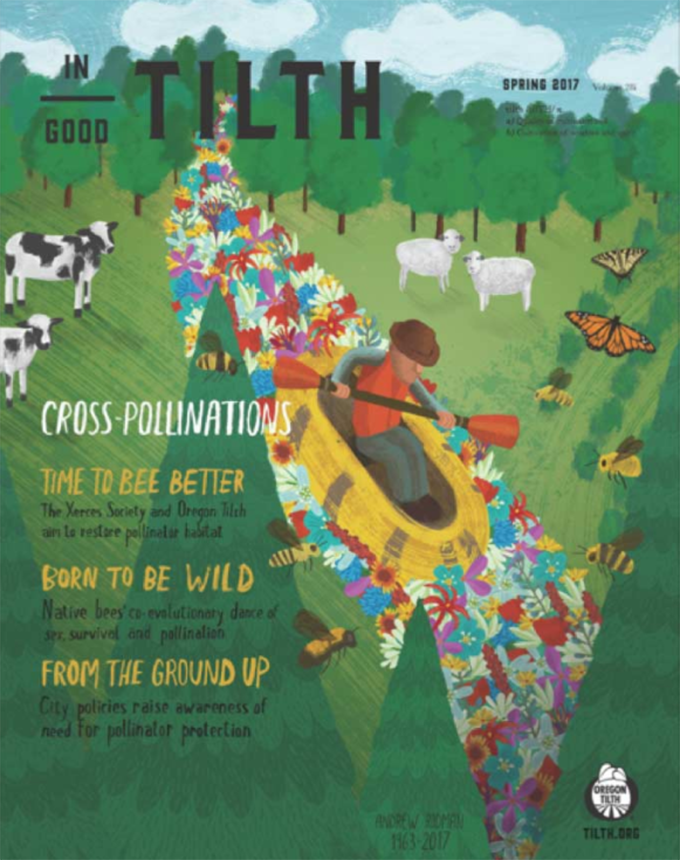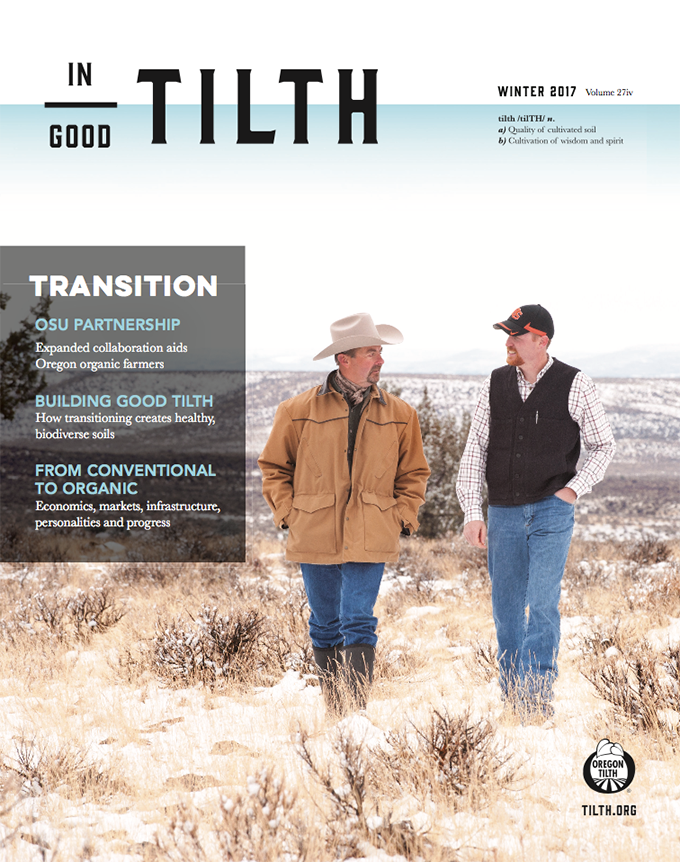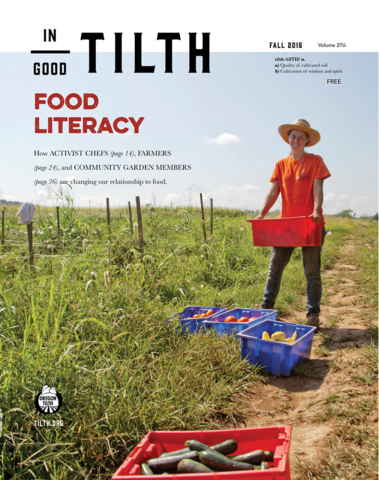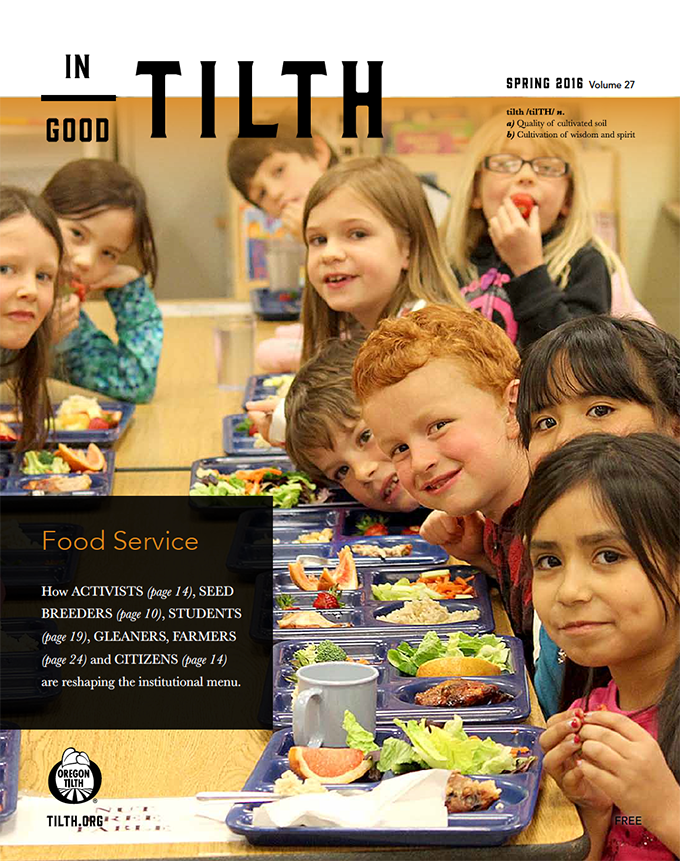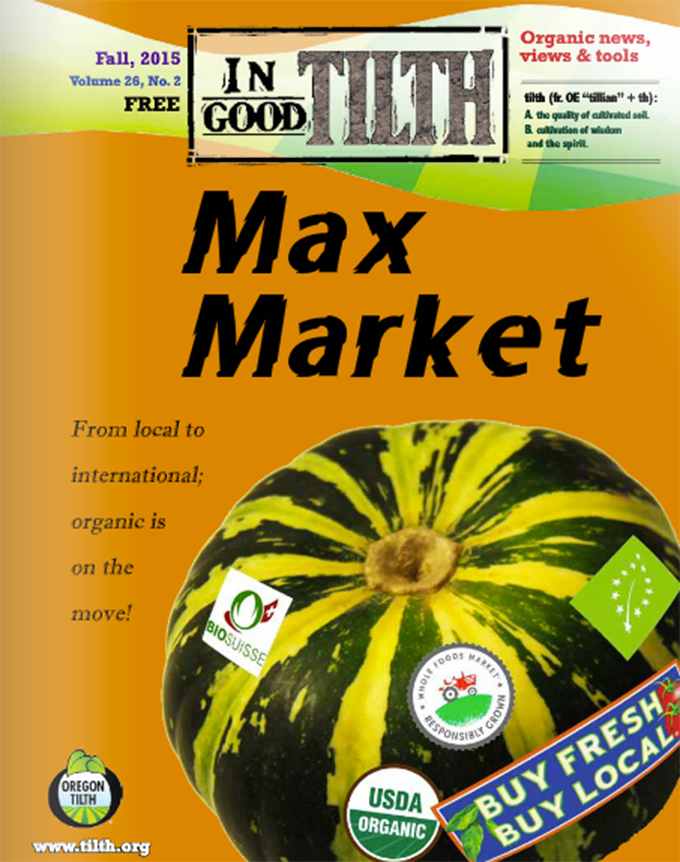A good apprenticeship is a win-win. Beginning farmers get hands-on learning experience and the opportunity to build lifelong relationships with mentors and colleagues. Farm owners get access to enthusiastic workers with tons of energy and fresh ideas, an appealing prospect in today’s tough labor environment.
But operating a successful apprentice program is not always easy. Learners need support to succeed, and matching the right apprentice to the right farm is key to ensuring a positive experience for both parties. Like all hiring, mistakes can be costly. It is also critical to ensure that any internship program adheres to all relevant labor laws. One of the most important is classifying participants correctly as either employees or unpaid interns as conditions dictate. Internship law is rapidly changing, and misclassifying apprentices as unpaid interns when they are, in fact, employees could leave farms vulnerable to lawsuits. Farm Commons, a nonprofit organization that helps farmers with legal, insurance and financial issues, provides detailed information and videos on setting up programs that comply with local and federal regulations.
When done right, however, internship programs can energize the farm system and allow established farmers to make a meaningful investment in the future of agriculture. There is no one way to make it work; several models can serve different kinds of farms and learners.
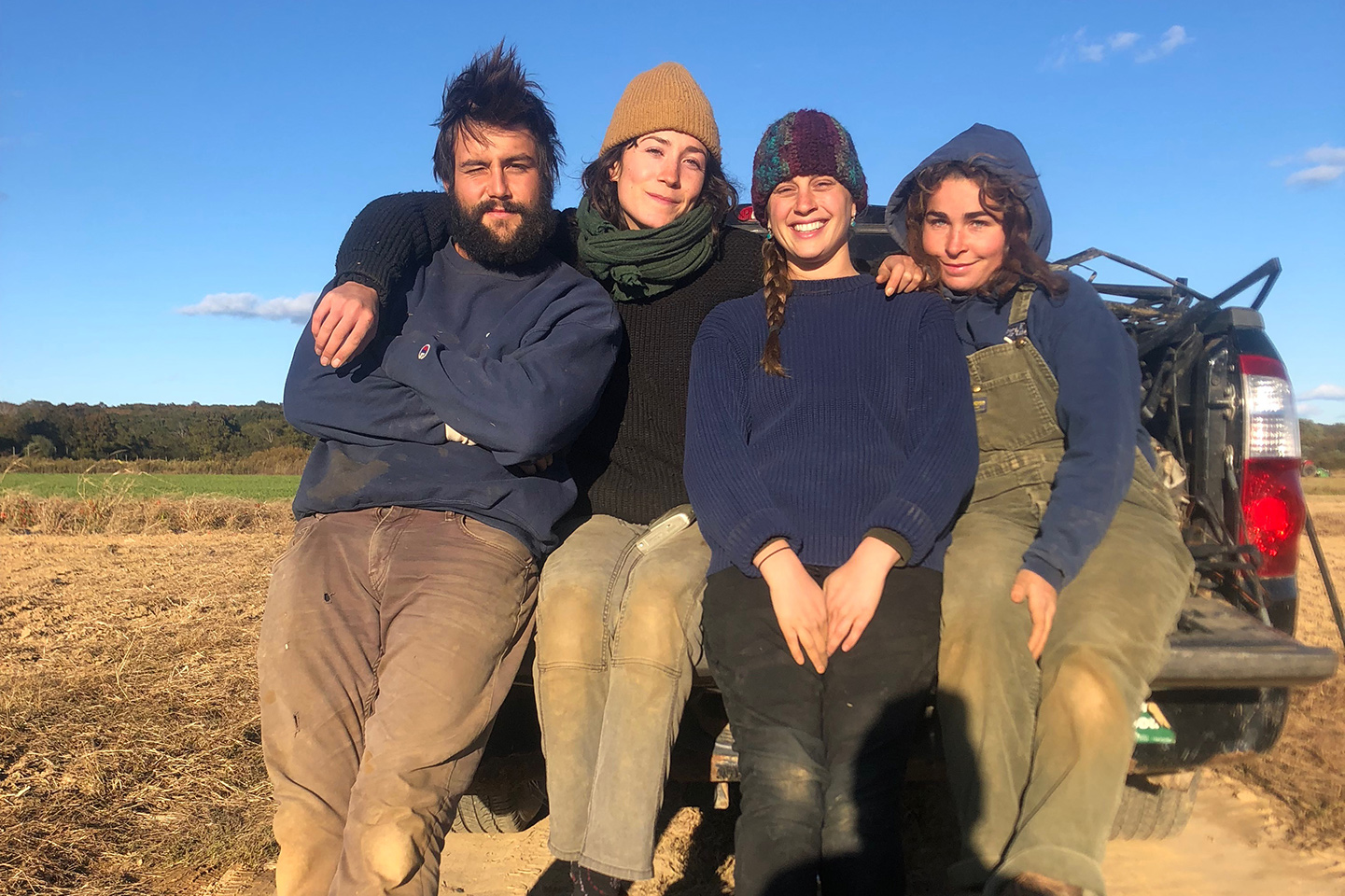
Photo courtesy of Amber Waves Farm
The traditional apprenticeship programs
Amanda Merrow is the co-founder and farmer at Amber Waves Farm in Amagansett, New York. Four years after launching the farm in 2008, she and her farm partner Katie Baldwin launched an apprenticeship program.
“Katie and I are the product of an apprenticeship program at Quail Hill Farm, a project of Peconic Land Trust, and but for that experience, I’m not sure how I would have landed my current role,” said Merrow. “I’m so grateful for having had that opportunity. It felt like absolutely our duty to pay it forward and provide that agricultural education to anyone who wanted.”
Amber Waves Farm takes on an average of four apprentices each year. In addition to doing most of the farm work, they spend time each week in an informal group education session based on a 20-section handbook Merrow and Baldwin developed to teach beginning farmers about topics from farm and equipment safety to greenhouse care, weed control and soil science. Topics follow the growing season so each week’s classroom learning can be reinforced by real-time, hands-on experience.
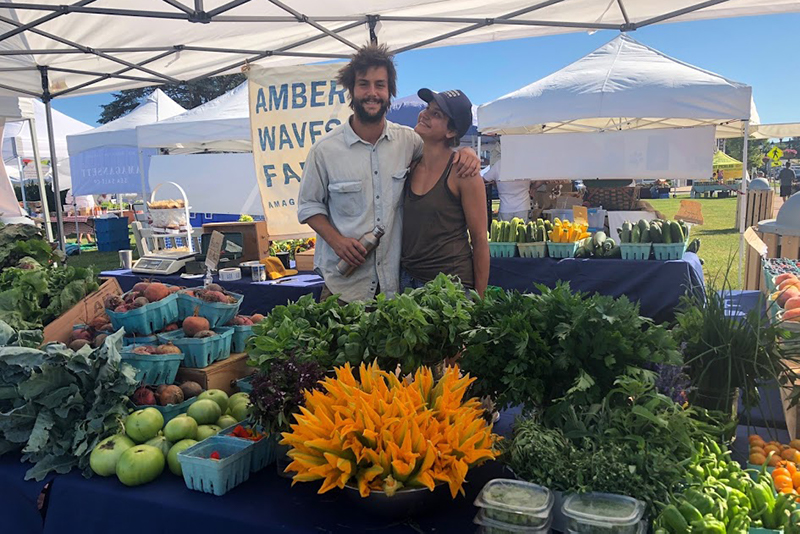
Photo courtesy of Amber Waves Farm
“I remember being totally green as an apprentice,” said Merrow. “I didn’t even know what boots to buy. So I tried to create a structure that would have helped me as an apprentice.”
Apprentices are compensated at minimum wage through standard payroll, including their time spent in education.
One major challenge faced by Amber Waves Farm and others in the area is housing. Rentals are expensive and hard to find in the Amagansett area, so Amber Waves leases several nearby houses to offer at subsidized rates to apprentices.
“It’s a huge annual expense to carry the leases on these multiple houses, but without it, we’re totally limiting our pool of who could afford to do this,” said Merrow. “This area has done a good job of preserving farmland, but without preserving affordable places to live, who will work on that land?”
Savannah Nevarez, assistant harvest manager at Siena Farms in Sudbury, Massachusetts, started out at Siena Farms as an apprentice in 2018. She was looking for an entry-level role in farming and agriculture, and found the apprenticeship listing on a food-focused online job board called Good Food Jobs.
“It was an amazing introduction to farming,” she said. “We are super hands-on, and you learn so much in one summer.”
Still, Nevarez says the learning curve for apprentices is steep, especially in the early days of the season.
“From the perspective of an apprentice last summer, we come in, and we know nothing,” she said. “And there are people who have been working on the farm for four or five years and know the systems like the back of their hand. It can make things more difficult until everyone falls into a groove. There’s a point in the season where there’s that shift, where everyone knows what they’re doing.”
Nevertheless, Nevarez said the program also plays an essential role in the farm’s talent pipeline; everyone she works with at the farm this season was originally promoted from the apprentice program.
“I think it would be hard to hire for staff otherwise,” she said. “The apprenticeship is really pivotal to us functioning at all.”
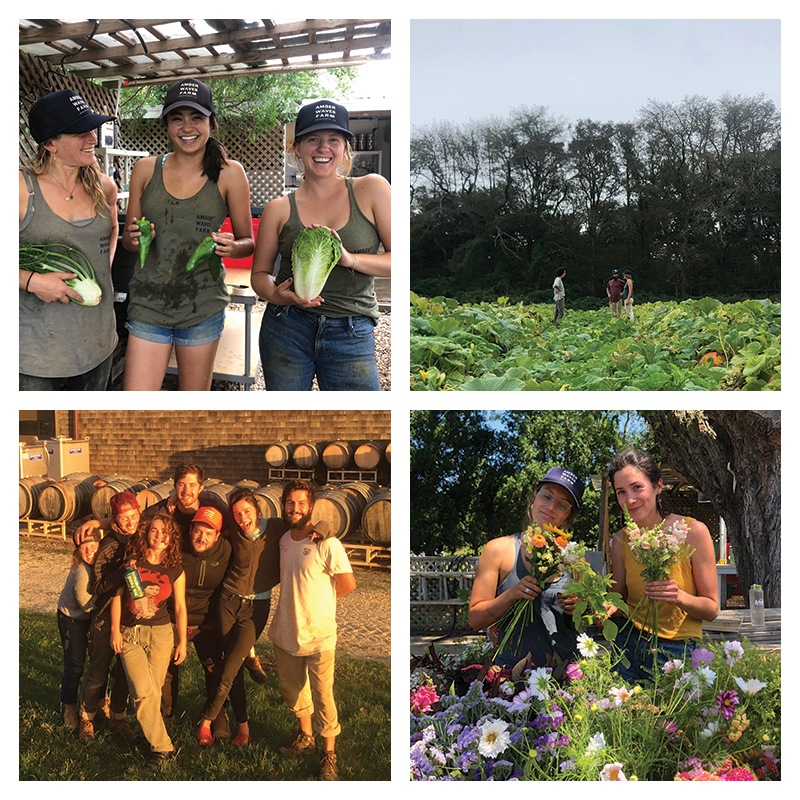
The third-party facilitator
For farms interested in hosting interns but unsure of their ability to screen, hire and manage them on their own, third-party programs can be a valuable ally. In Ohio, the Ohio Ecological Food and Farm Association, or OEFFA, plays a key role in connecting aspiring farmers with growers who need their help.
Three years ago, OEFFA introduced an apprenticeship program as part of its Begin Farming Project designed to help build the skills and experience of young farmers. Apprentices are matched with one of six host farms for a season, where they engage in hands-on learning. In addition, OEFFA helps apprentices develop individual learning goals and business plans, and arranges for them to attend conferences and workshops, tour other farms and network with one another.
Rachel Tayse, farming program coordinator at OEFFA, said the learning plan is a lynchpin of the program’s success. After they are accepted to the program, she helps apprentices develop a custom learning plan with specific skill and knowledge goals, refined by what they can accomplish during a single season on a farm. The host farmer also receives a copy so everybody’s on the same page.
“It takes a lot of extra effort and time,” said Tayse, “but it’s a unique way to make sure we’re really offering what the particular individual wants to learn.”
Host farms are responsible for paying their apprentices, but OEFFA helps by partially subsidizing wages through a USDA grant.
“We did it that way to incentivize hosts to put in the extra work it requires to do the education component and to host an on-farm event or two,” said Tayse.
Some of the host farms had never had a full-time employee, so OEFFA helped them develop the administrative infrastructure they needed.
“During the first year, we spent a lot of time with the host farmers helping them set up good employment practices,” said Tayse, like helping growers file workers’ compensation and set up payroll withholdings.
“We’re really clear about roles and responsibilities, which took more effort than expected at first,” said Tayse. “That’s on all ends. The apprentice has to identify their learning goals, the farm has to pay all the taxes and OEFFA is responsible for facilitating between the entities. That way, everyone is fulfilled in their interest and their skills and their commitment to the program.”
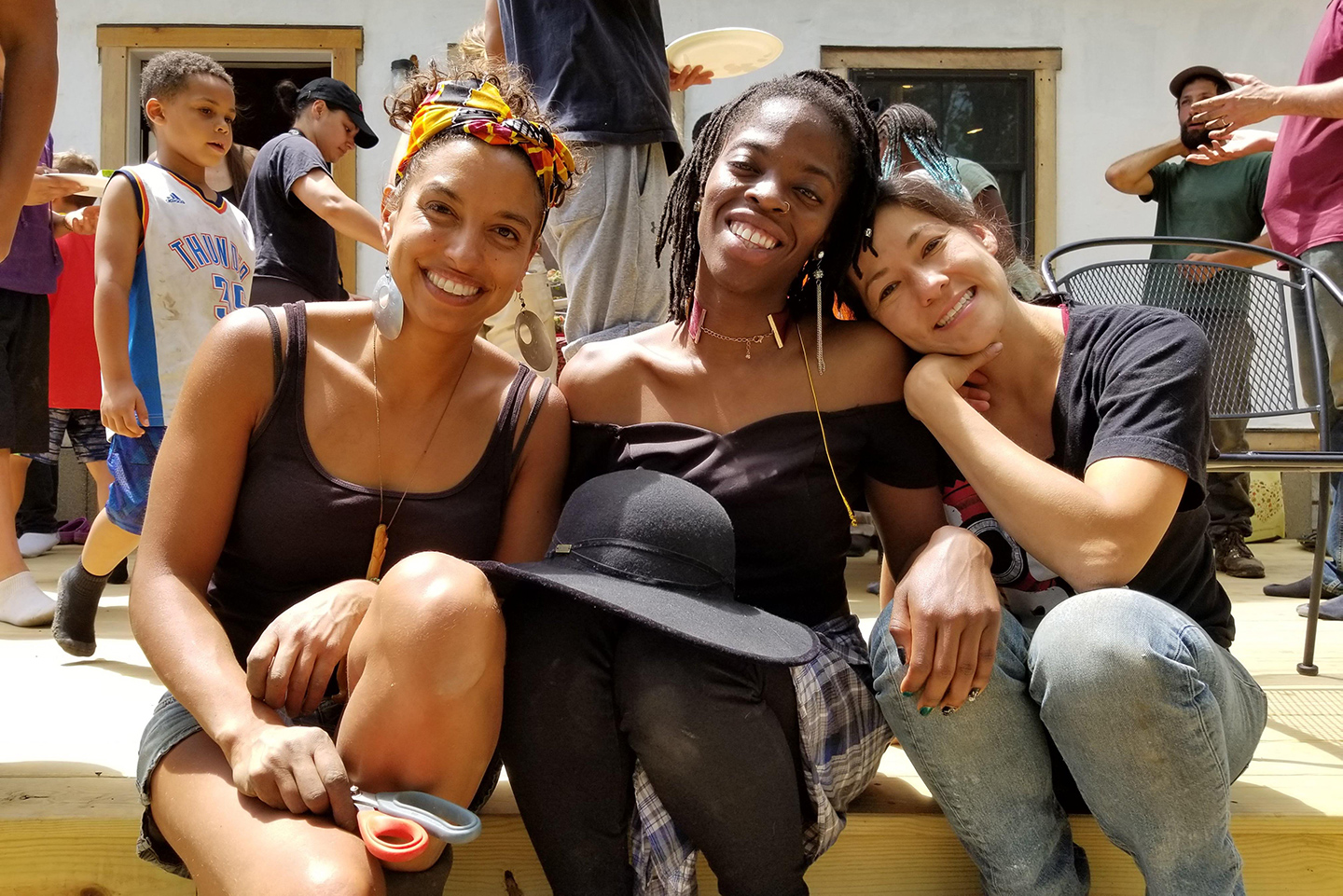
Photo Courtesy of Soul Fire Farm
The short, intensive immersion
Soul Fire Farm is a mission-driven farm in Petersburg, New York, run by and centered around black and indigenous people of color. In addition to operating several other programs and a 100-member CSA, Soul Fire Farm runs eight-week-long immersion programs each year for black, indigenous and other people of color interested in learning more about agriculture and gaining hands-on regenerative farming experience in a culturally relevant environment. It is called BIPOC-FIRE, an acronym that stands for Black Indigenous People of Color Farming in Relationship with Earth. 2019 will be its sixth year.
At first, Soul Fire Farm only offered traditional apprenticeships, but co-founder and co-director Leah Penniman said that many people of color found an unsupported experience to be triggering and retraumatizing.
“The history of black folks in relationship to land in the United States is riddled with different oppressions, from slavery, to sharecropping, to convict leasing and violent expulsion from land that was held independently,” said Penniman. “That trauma has resulted in a complicated relationship with land. We realized that just to have an apprenticeship program without any type of healing or acknowledgment around that just led to strife and difficulty.”
Penniman and her team created a structured, weeklong, 50-hour immersion program that pairs hands-on experience at the farm with classroom instruction on practical farm topics, lessons on history and healing from trauma, ritual, music, storytelling and dance. Participants live on the farm during the week, preparing and eating all meals together. The program is priced on a sliding scale from $100 to $1,100; Soul Fire says the full cost of the program is $900, and asks participants to give that amount or more if they are able.
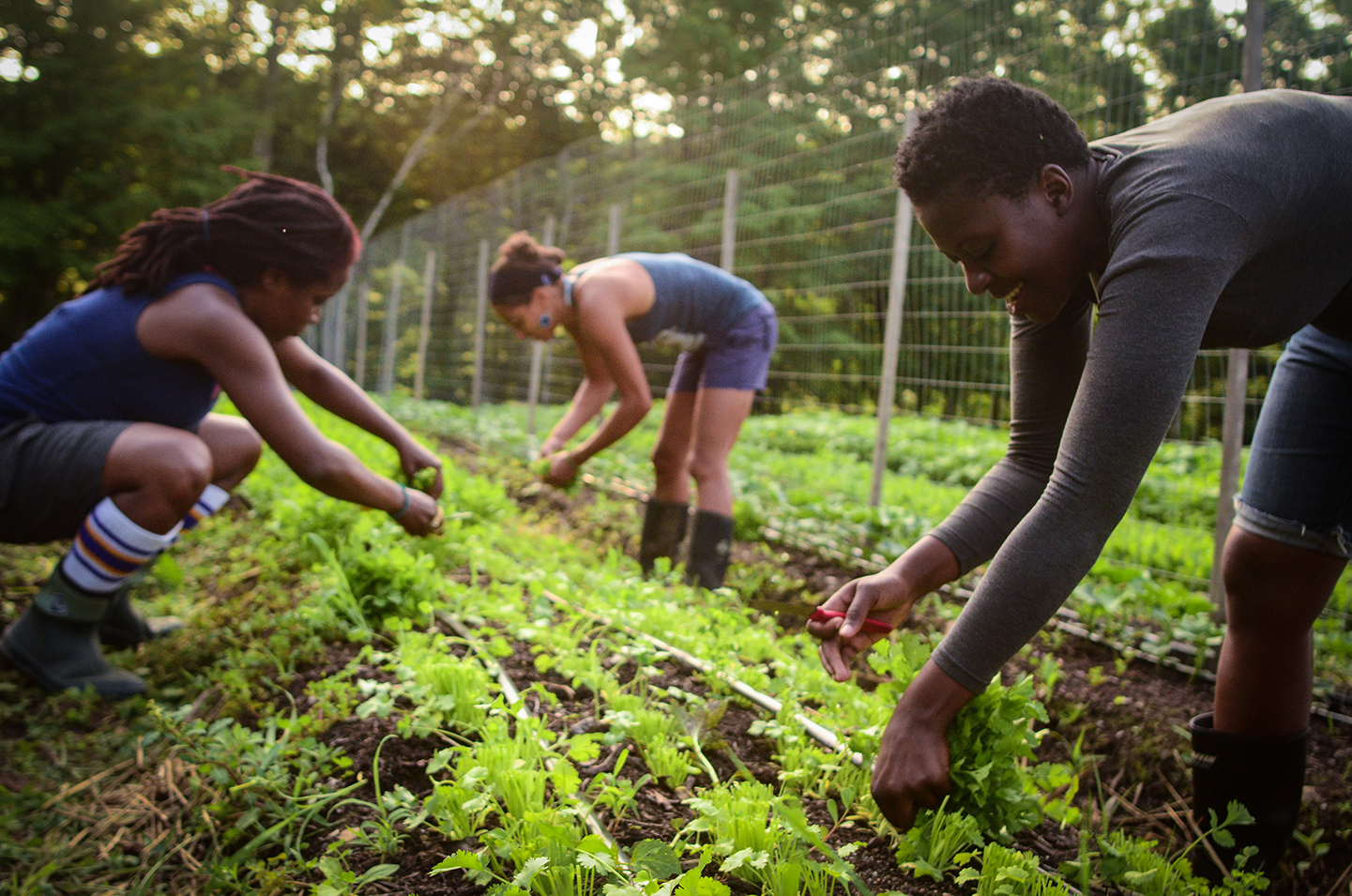
“This works because we’re a communal people,” said Penniman. “Doing things together lends the support and camaraderie that’s necessary to do land-based healing.” A shorter duration also makes the program more accessible to people with other responsibilities like family or work.
Offering the program for a fee enables Soul Fire Farm to give it the hands-on attention it demands.
“It’s a lot of work for our instructors,” said Penniman.
It takes a dedicated program team of three to four people separate from the full-time farmers to make the BIPOC-FIRE program work.
“It would not be possible to do it if we were only farmers trying to farm during the week and then also trying to run a program,” she said.
Why invest so much time and effort in developing and operating a training program? Penniman thinks it is critical to the entire enterprise of reclaiming rural agricultural spaces for black people, indigenous people and people of color.
“If you know something, it’s your duty to pass it on, because that is what seeds our future opportunities for sovereignty and leadership,” she said. “It’s incumbent upon us to make sure we are sharing what we know. Farming is not a theoretical enterprise. It’s a hands-on, practical, and experiential thing. So those of us who have some farming skills and have the capacity to welcome learners, it certainly does contribute to the future of sustainable and equitable farming.”


